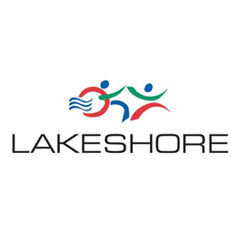|
Key Takeaways This is the fourth of a five-part series from Lakeshore Foundation that will move through the five domains necessary to provide a comprehensive approach to ensuring that you are offering inclusive fitness programs and that your fitness center is accessible to all individuals, including those with disabilities. Join us as we move through the five domains to ensure your fitness center is welcoming to everyone. Read Parts 1 through 3 here: Read on to discover how equipment and technology can be the keys to inclusive and equitable fitness. And, use the step-by-step process to evaluate your current setup and make improvements to create an experience that is welcoming to all individuals. |
Ensuring access to the proper equipment and technology to take part in an exercise classes or work out at a fitness facility is a vital component of establishing an accessible and welcoming environment. The products and tools discussed in this blog include those things that enable all potential customers to access your facility and then make the most of their experience by participating equitably. While you might immediately think of aspects of the built environment, like the space between machines and the accessibility of every area of the facility, this domain also includes things like automatic sliding doors, bus lifts and communication devices.
Equipment is, of course, a major part of the fitness center experience, so this should be a primary area of focus. Without any pieces of accessible equipment, someone with a disability may not be able to exercise in your gym. Some equipment manufacturers sell inclusive equipment where the seat is removeable or swings away so an individual can self-select whether they want to transfer to the provided seat or remove the seat and remain in their wheelchair.
However, accessible equipment does not always have to mean expensive or specific adapted equipment. In fact, universally designed equipment is often the most useable by the largest variety of people. Along those lines, some standard pieces of exercise equipment are automatically inclusive, such as a cable column or ski trainer.
Functional fitness equipment is often more universally designed. Other equipment might need only small adaptations or additions to make them accessible, such as adding cuffs instead of handles to equipment for an upper-body exercise.
Sometimes it’s not the equipment but the location of the equipment that is the limiting factor. Ensure that you follow the Americans with Disabilities Act’s fitness center guidelines for equipment placement. Be sure at least one piece of each type of equipment is accessible to someone with a mobility device. And, finally, never assume someone with a disability won’t want to, or be able to, use a certain piece of equipment.
Technology can also play a big role in the accessibility of equipment. Cardio equipment that has audible instruction could be helpful for someone with a visual impairment. Closed captioning should be offered on all TVs. Having a check-in system that is accessible to every individual who comes in is vital. This includes the height of your check-in counters, which should be low enough for an individual who uses a wheelchair to be able to reach and fill out any paperwork. High-top counters are never accessible.
Any digital content, whether by app or website, needs to be able to be read by a screen reader. Any registration or forms also need to be in an accessible format with options available in large print or digital. New technology is available on the market all the time and accessibility is always being improved. Sometimes, the best option is to talk to your members with a disability to find out what they use to navigate different environments.
Inclusion Solutions
Cuffs and ACE bandages can be simple, inexpensive solutions to making some pieces of equipment more accessible for individuals without grip strength. Cuffs can be used on multiple pieces of equipment, including dumbbells, cable columns, weighted ropes and more. ACE bandages, meanwhile, can be used to wrap a person’s hand and attach it to a piece of equipment if they are unable to hold onto the handles.
Be sure to partner with the disability community to have them provide feedback on the accessibility of your facility and then make changes accordingly.
Resources
Check out this blog to learn more about Lakeshore Foundation and Serving Clients with Disabilities. And, be sure to read Parts 1 through 3 of this series:




 by
by 









 by
by